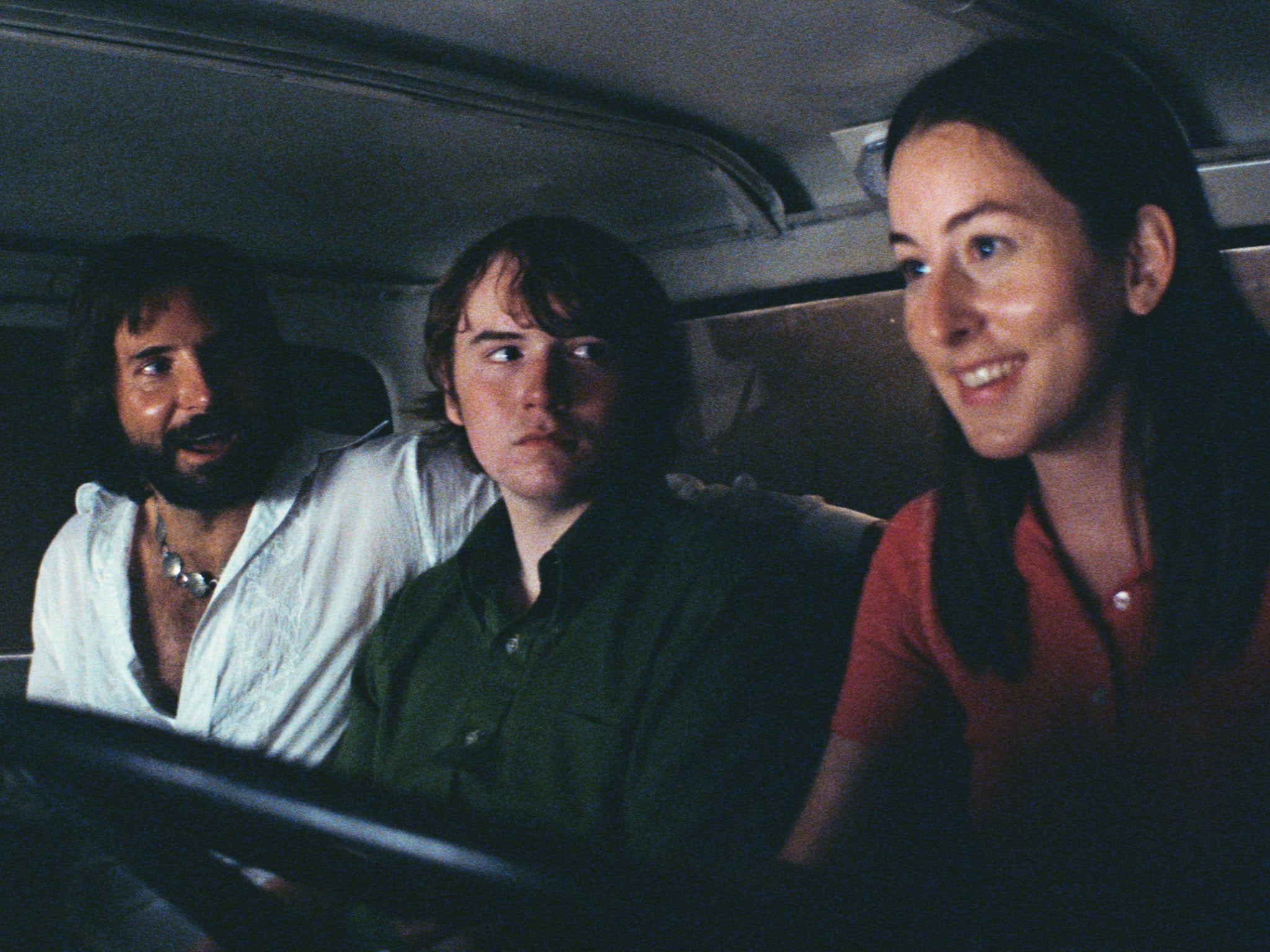Licorice Pizza review: Paul Thomas Anderson uses juvenile memory less as a conceit than he does an excuse
The director of ‘Phantom Thread’ and ‘There Will Be Blood’ has crafted a precious, loose-limbed jaunt through 1973 Los Angeles
Dir: Paul Thomas Anderson. Starring: Alana Haim, Cooper Hoffman, Sean Penn, Tom Waits, Bradley Cooper, Benny Safdie. 15, 134 minutes.
Alana Kaine, the heroine of Licorice Pizza, Paul Thomas Anderson’s loose-limbed jaunt through 1973 Los Angeles, is forever staring at her own reflection. She does it not out of narcissism, per se, but a desire to understand what exactly the world sees when they look at her. The slim bridge of her nose. The slightly close-set, ocean-blue eyes – is there sensuality there? Wit? Despair? In one of the film’s key (and best) sequences, Alana squints into the side mirror of a transport truck while she tries to reverse it back down one of the city’s many narrow, twisted roads. It’s a handy metaphor for her own existence: one where the very concept of maturity is a logic puzzle that’s taking all of her energy to solve.
Licorice Pizza not only dwells in this state of disorientation, but savours it. Atypically nerveless for an Anderson film (he created the celluloid muscle spasm that is There Will Be Blood, after all), it has a precious, freewheeling quality that treats the failure to reconcile childhood with adulthood as a badge of emotional sincerity. Alana is in her mid-twenties, employed as a high-school photography assistant and still living with her mildly resentful family. She’s played by Alana Haim, of the musical trio Haim – her real-life sisters/band members, Danielle and Este, along with their parents, Moti and Donna, make up her onscreen relatives.
Those ocean-blue eyes first catch sight of Gary Valentine (Cooper Hoffman) in the reflection of a handheld mirror. She’s at his school’s photography day. He immediately fixes his dumb-puppy smile on her. Hoffman is the son of the late Philip Seymour, a close collaborator and friend of Anderson’s. But Hoffman’s strengths lie not in the phantom traces of his father, but in his differences. Gary, a child actor with the patter of a car salesman, has the goofy, non-toxic ego of someone who’s never had to stare into the abyss and have it stare back.
Though Alana rebuffs him, for the obvious reason that he is a high schooler and she is an adult, she’s amused enough by his premature self-confidence that she finds herself slowly absorbed into his friendship group. You can certainly see why he’d be so infatuated. Haim captures the same unconscious magnetism that’s always been the hallmark of her band, a rockstar cool without the theatrics – only poker-straight hair, slouched shoulders, and the vague air of popular-kid judgement.
The film, like Quentin Tarantino’s Once Upon a Time… in Hollywood, is nestled within the city’s mid-century culture shift. In 1973, Los Angeles was still experiencing the aftershock of the Manson murders, while successive waves of new, rebellious-minded filmmakers shook the industry’s foundations. Perhaps it’s no surprise that Anderson and Tarantino, both indie darlings of the Nineties, were compelled to revisit the period. They’re at their own crossroads – crushed somewhere between the streaming giants and corporate mergers. All they can hope for now is a little renewed ingenuity, which Gary amply demonstrates when the oil crisis puts an end to his juvenile waterbed business (“Vinyl is made of oil,” a scowling Alana informs him).
And while Anderson, with the help of co-cinematographer Michael Bauman, has marinated each frame of Licorice Pizza in the warmth of summers past, he’s less naive about the period than Tarantino. Alana finds that Gary’s gung-ho idealism is frequently countered by the cyclonic despair of the men whose attention she craves – whether it be Sean Penn’s boorish actor Jack Holden (fictional, but clearly based on William Holden), or Bradley Cooper’s scene-stealing, frothing-at-the-mouth iteration of real-life figure Jon Peters, a film producer and Barbra Streisand’s former lover.

But, in that first shot of Gary in her mirror reflection, Alana’s not actually seeing him – only how he looks at her. What we’re really watching is Gary’s perspective on things, as Anderson lovingly mines the experiences of his friend – and former child actor – Gary Goetzman. Boxing Licorice Pizza inside the realm of juvenile memory more often feels like an excuse than a conceit. A recurring bit where a restaurateur (John Michael Higgins) cracks racist jokes may show things “as they were”, but that doesn’t answer the question of why it’s pitched with the same breeziness as the rest of the film.
And while the film’s central dynamic, for the most part, sticks with “besotted teenage boy and bemused woman”, it does reach a point where Anderson simply gives up and gives in to Gary’s own self-aggrandising fantasy. Where exactly Alana stands from that point on doesn’t seem to matter all that much – it’s a good enough fate simply to be seen and adored, even if all that’s really being perceived is a reflection.



Join our commenting forum
Join thought-provoking conversations, follow other Independent readers and see their replies
Comments